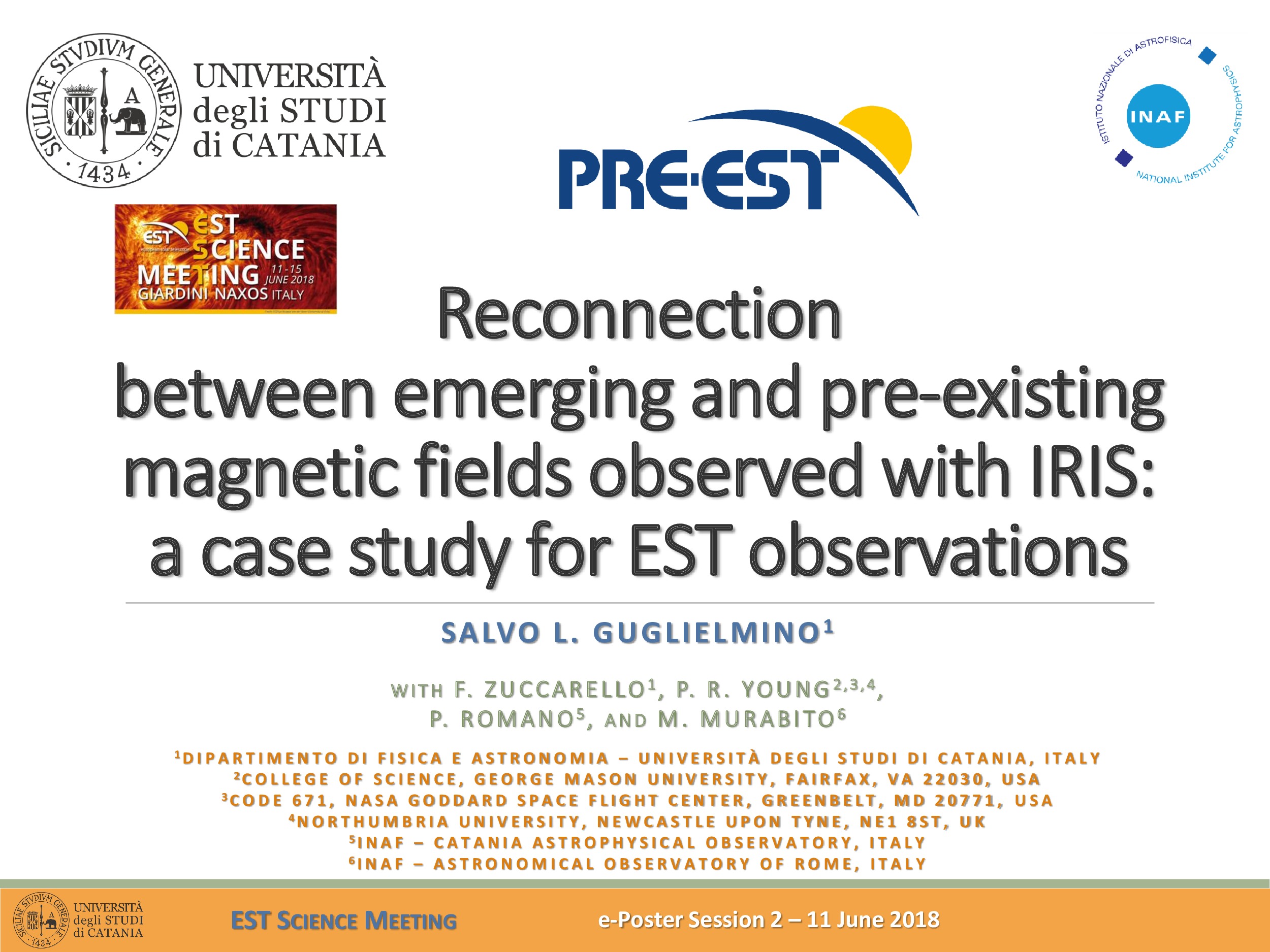Date of upload:
19.06.2018
Co-author:
F. Zuccarello, P.R. Young, P. Romano, M. Murabito
Abstract:
We report multi-wavelength ultraviolet observations taken with the IRIS satellite, concerning the emergence phase in the upper chromosphere and transition region of an emerging flux region (EFR) embedded in the unipolar plage of active region NOAA 12529.
These data are complemented by full-disk, simultaneous observations of the Solar Dynamics Observatory satellite, relevant to the photosphere and the corona. The photospheric configuration of the EFR is also analyzed by measurements taken with the spectropolarimeter aboard the Hinode satellite, when the EFR was fully developed.
Recurrent intense brightenings that resemble UV bursts, with counterparts in all coronal passbands, are identified at the edges of the EFR and in the region of the arch filament system (AFS) cospatial to the EFR. Jet activity is also found at chromospheric and coronal levels, near the AFS and the observed brightness enhancement sites. The analysis of the IRIS line profiles reveals the heating of dense plasma in the low solar atmosphere and the driving of bi-directional high-velocity flows with speeds up to 100 km/s at the same locations.
Comparing these signatures with previous observations and numerical models, we suggest evidence of several long-lasting, small-scale magnetic reconnection episodes occurring between the emerging bipole and the ambient field. This process leads to the cancellation of a pre-existing photospheric flux concentration of the plage with the opposite polarity flux patch of the EFR. Moreover, the reconnection appears to take place higher in the atmosphere than usually found in UV bursts, explaining the observed coronal counterparts.
These observations provide a case study for the EST science requirements, as higher spatial and temporal resolution are necessary to better understand and characterize the onset and development of such small-scale reconnection events.
